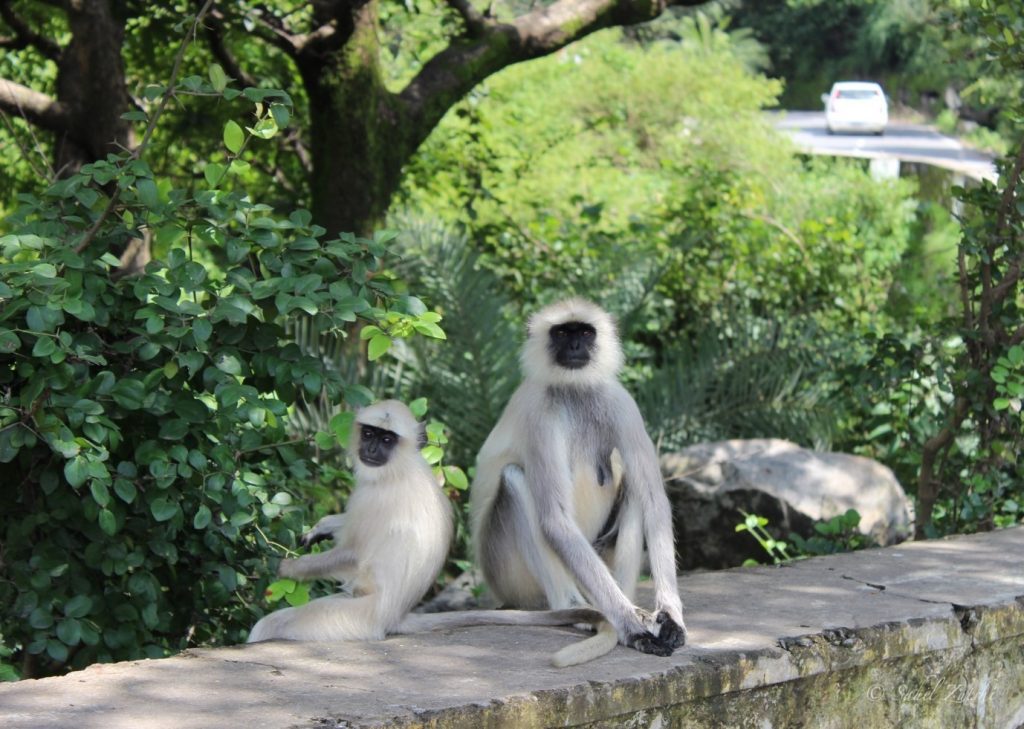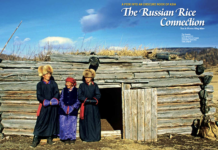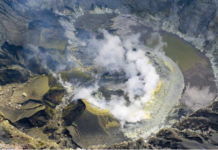Interviewed by Elizabeth Lim
Video produced by Lua Guan Sang
ASIAN Geographic recently caught up with nature and wildlife conservationist Sahil Zutshi, who left his work in the environmental and development planning sectors in the UK and Spain, to pursue conservation and research work in India.
Living in the middle of Mount Abu Wildlife Sanctuary, in north-west India, Sahil shares with us the ongoing human-wildlife crisis, what he thinks is currently lacking in the Indian community, especially when it comes to the understanding of humans in relation to nature and wildlife conservation, and what he hopes for the future.
AG: How and when did you start getting into nature and wildlife conservation?
Sahil: I’ve always been interested in nature ever since I was growing up. Incidentally, this is a place where I spent much of my childhood. So, I’ve always been surrounded by the hills, the mountains, nature. It’s been there with me very much from the start. Also, I did my schooling at a sort of, you could say, not a mainstream school, in the south of India and some of our classes, were based outdoors. So, it’s been more of a regular feature from the start, but how I got involved in the work is quite incidental actually.
When I returned to India in 2017, I realised that the wildlife and environment, in general, here was actually quite neglected. I saw there was no real work being undertaken and the state of the environment, the level of awareness was quite painful to see, also a little shocking. Since no one was actively working on these issues, I thought it was a good opportunity for me to sort of get involved in this kind of work and start doing something about this actively.
“It’s a place which is very close to my heart since I spent some of my childhood here. It’s a shame to see things go the way they are actually. So, I thought of combining my interests with some of my background and start undertaking the work.”
AG: Something interesting you shared with me is that you actually reside in a declared wildlife sanctuary. Could you share with me a little bit about how you ended up living there and what’s the environment like?
Sahil: After leaving my job in London and moving back to India, it was definitely challenging at the start, especially after having lived abroad for a fairly long time. So to live in the middle of nowhere literally is quite challenging. The nearest town is around eight kilometres from here. But to be surrounded by what you see behind me is quite amazing. I don’t miss the cities so much. I’ve always been a bit of a village boy. So, it’s not so difficult to adjust. But yeah, there are some things that you miss like some of the conveniences, but I enjoy this more.
 Mount Abu Wildlife Sanctuary
Mount Abu Wildlife Sanctuary
AG: In India, and especially where you are, I understand there is a human and sloth bear conflict ongoing. Could you share a little bit more on this and the situation?
Sahil: So, here in Mount Abu it’s quite common to spot sloth bears. Each time I used to come back to Mount Abu, even when I was living abroad, I could easily spot them on the hillsides. But over the last 10 years, the population of the sloth bears has increased over here, in fact, they’ve almost doubled.
The wildlife sanctuary is quite fragmented in the sense that there are a number of villages and the main town, which fall within the wildlife sanctuary and eco-sensitive zone. So, as you would imagine, with the population expanding, and also the villages and towns sprawling, their natural habitat is being encroached upon. Now, with the increasing frequency, you start seeing the sloth bears, sort of venturing into settlements, and areas that are inhabited by humans.
What seems to be a major problem as well, is that there is a lack of a robust waste management system over here as there’s no adequate waste management disposal process implemented by the authorities. You see garbage and waste, sort of scattered around roadsides, around settlements, ultimately, causing the sloth bears to start venturing into urban areas; and I can assure you that they don’t enjoy socializing with humans just as much as we don’t enjoy bumping into them!
AG: Has this caused animosity between nature and humans?
Sahil: In a sense, it has because now sloth bears are garnering a bad reputation and the media are constantly reporting on these creatures and identifying them as the world’s deadliest bear species, and at times rightly so, because they’re known to attack without provocation occasionally. However, I have begun to realise that it is us humans who are generally venturing into areas where attacks occur as whenever we enter into forested areas, these bears get startled and may attack because they see us as a threat.
So, one of my roles is really to try and raise awareness here, that when the local villagers are venturing into forested areas, they do so with some sort of warning, either make a noise, when they’re going into the forest, for the bears can hear people approaching well in advance. Additionally, it is important to create an adequate system where waste is collected routinely and only disposed of in a sort of environmentally appropriate manner.
AG: Beyond this project, is there anything else in the pipeline for you?
Sahil: One of the projects I’m working on right now revolves around the protection and conservation of a rare bird species here, called the Green Avadavat. These incredible creatures have a very restricted distribution range and are an endemic species; but luckily for me, Mount Abu is the only place where they are found in relative abundance. These birds are really beautiful but are gravely threatened by human activity and the illegal bird trade as they’re songbirds, and quite attractive. Two decades back, the population was almost wiped out in this area and the surrounding region. I have also spoken to WWF and some researchers on this and we’re looking to hopefully do some extensive surveying work.
 Image of endangered bird species – Green Avadavat
Image of endangered bird species – Green Avadavat
Secondly, later into the year, I’m hoping to work on a project related to the Hanuman Langurs, which are a fairly common breed of monkey langur species found in India and are considered sacred to the Hindu faith, with many linking them with Lord Hanuman, the Monkey God. The danger of this is that many people are stopping along the roadsides to feed them and many of these monkeys are waiting to be fed near the roads. With increasing traffic, the number of monkeys that end up as roadkill is increasing. So, this project would study roadkill; and though we won’t be able to stop people from feeding them, we hope to highlight the harm we are doing by feeding the monkeys and hopefully launch a conservation initiative. Renowned anthropologist and primatologist, Dr. Sarah Blaffer Hrdy and also Noel Rowe, Director of Primate Conservation Inc. have also encouraged the proposal.
 Image of common monkey species – Hanuman Langur
Image of common monkey species – Hanuman Langur
AG: And what would you say was the greatest challenge for you when you were getting into conservation? What would you say to those who want to start getting into conservation work but are not sure where to start?
Sahil: I think, in all honesty, the struggle is still ongoing. Frankly speaking, I’m very new to this work. It has only been three or four years, and I’m still trying to get a foothold in this area of work. Also having an advanced qualification in say, zoology or wildlife biology or a related field in the future would help. In a country like India, often people only look at your academic qualifications, so working independently is challenging and funding can be a show-stopper to undertake such work.
“Just go for it. Just make the plan. If you’re really interested and dedicated to undertaking such work, you will find a way somehow. So, with hopes of moving forward with the links that I’m establishing and with the determination that I have to do something over here, I’m sure something will work.”
AG: In your opinion, what do you feel is lacking in the community?
Sahil: I think the main thing lacking is definitely education, especially when we talk about bringing conservation work to the forefront. I cannot speak for elsewhere, but the definition of education that we seem to have developed now is that we are training people to get good jobs and earning money.
I’ve been very fortunate to have schooled at an institution that provided me with a holistic approach towards life. Now, I hope that rather than training our current generation to focus exclusively on the monetary aspect of life, I want to bring awareness to viewing life in a different way. I want to get something started at the local community level over here and even just starting out at local schools at a very early level, even kindergarten, and, you know, the age group after that, if you can expose them to the environment, have classes outside. This would give them an opportunity to appreciate the world we live in and once we have established this, I’m sure we can take this message forward at a slightly bigger level.
AG: Lastly, what are your goals and aspirations for the future?
Sahil: For starters, I really want to get more conservation attention for this wildlife sanctuary and region, and just nature and wildlife conservation in general, since no active work has been undertaken here previously. By writing articles and getting the message out, I want to get the ball rolling and get a conversation going.
Additionally, I also believe that small scale projects and grassroots projects are really the way to go, especially in areas where environmental awareness is at a very low level. And where no major organizations exist, I think it is the local people and concerned residents, who can launch small initiatives to perhaps make a small difference in their own backyard. Maybe other people start noticing this and it could propel something. When I first arrived here, the lack of concern for the environment was really painful to see. I had the attitude that I’m going to save everything, and I’m going to protect everything; but sooner or later, you realize that really burns you and it is better to focus on things that one can manage.
“So, instead of trying to do bigger things, I started focusing on very small things in my own backyard. If we have 15-20 people like this, who are looking after their own local areas, I think that’s going to make a real difference. At the end of the day, I hope that the local communities see what we are trying to do and come aboard to support us and hopefully develop some sort of sensitivity towards the environment they live in.”
 Educational workshops at rural schools
Educational workshops at rural schools
Listen to the full interview here on our newly launched “Asian Geographic Library: Podcast”!
Or head to Anchor, Spotify or Google Podcast!
ASIAN Geographic would like to thank Sahil Zutshi for being a part of this interview. You can find his works here!
Photo credits: Sahil Zutshi











